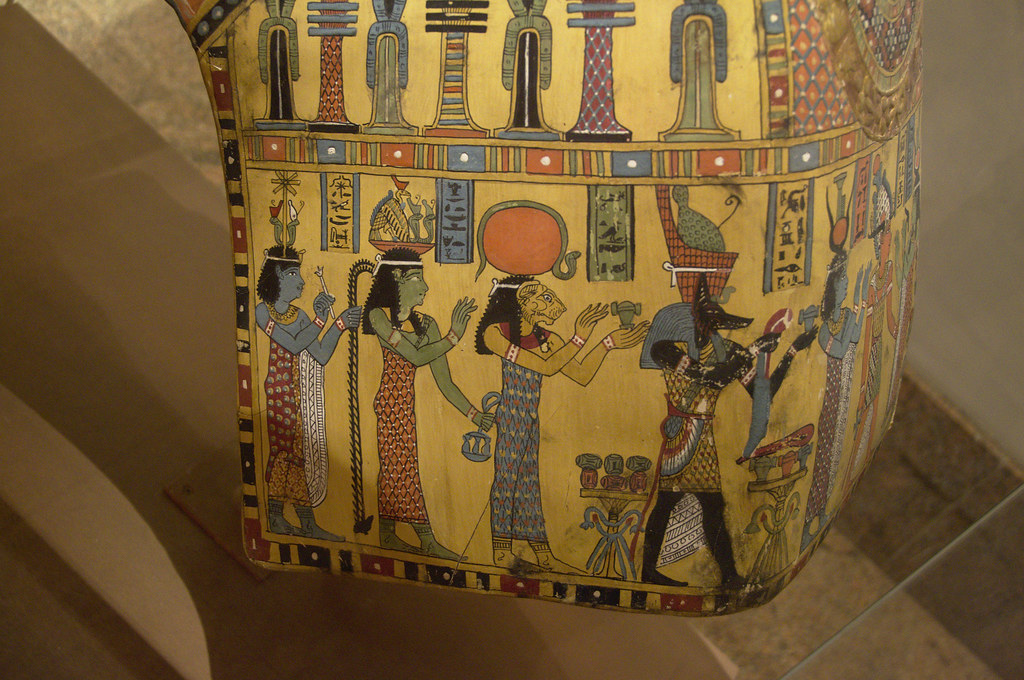#Roman Egypt
Text
The Roman Pharaohs of Ancient Egypt
In ancient history the pharaoh was the head of state and ruler of the country. However, he was not just a secular ruler, but a divine being on Earth who acted as an intermediary between the spiritual world and the earthly world. In essence he was a mortal representative of the gods. Interestingly, one did not have to be an Egyptian to be an Egyptian pharaoh. The act of conquering and ruling Egypt qualified one to be a pharaoh. As a result there were many foreign pharaohs throughout Egyptian history including those who were Persian, Nubian, Libyan, Hyksos, Kushite, and Macedonian Greek.
In 30 BC Cleopatra VII became the last ruler of Egypt from the Macedonian Greek Ptolemaic Dynasty. Cleopatra had backed the losing side of a Roman civil war, opposing Octavian and supporting Marc Antony. Octavian won, she was deposed, she committed suicide, and Egypt became a Roman province. When Octavian became Augustus and founded the Roman Empire, the Egyptians also recognized him as the official Pharaoh of Egypt. Afterwards successive Roman emperors were also declared pharaohs, until around the 4th century when Christianity became the dominant religion in Egypt.
Truth be told, most if not all Roman emperors didn't give a damn about being pharaohs. Most emperors never even stepped foot in Egypt and it didn't seem like they took their role as pharaoh very seriously. Regardless Egyptian iconography and art was crafted depicting Roman emperors in Egyptian style wearing Egyptian royal regalia and interacting with Egyptian gods. Some interesting examples are...
Gigachad Pharaoh Augustus

Tiberius

Nero
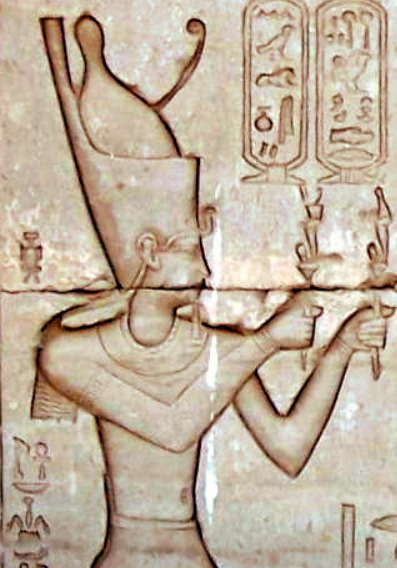
Nero again

Trajan making sacrifices to Hathor
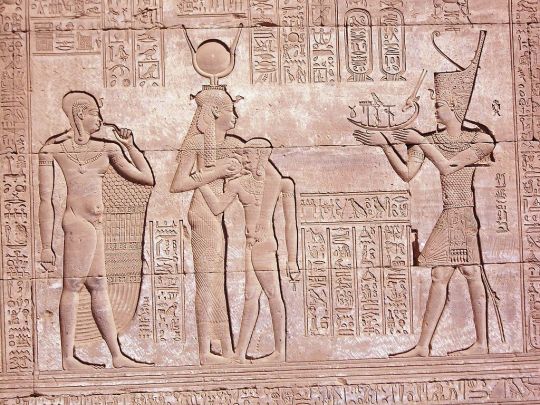
Domitian

Domitian with Horus
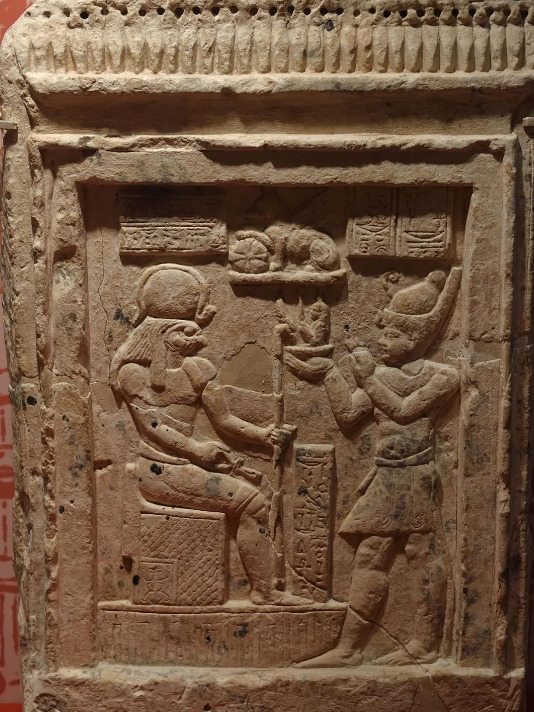
Caracalla
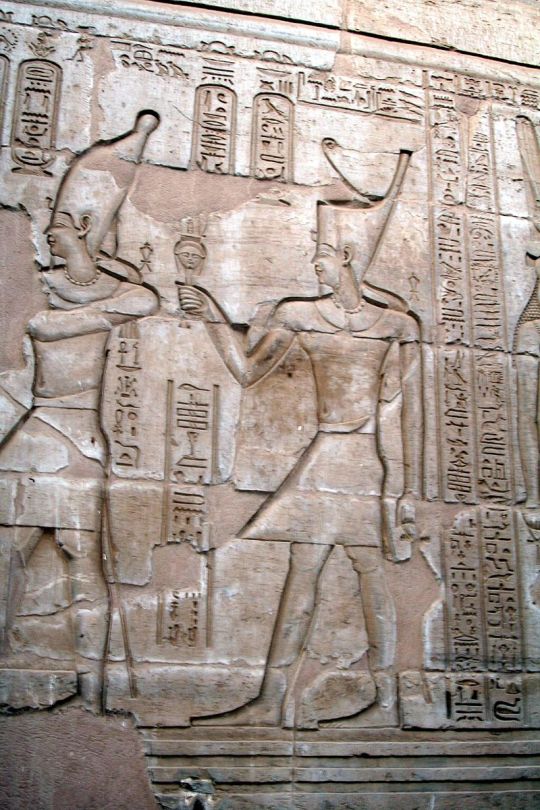
Marcus Aurelius

98 notes
·
View notes
Text

Mummy portrait (wax encaustic on sycamore wood) of a girl, from the Fayum region of Egypt. Artist unknown; ca. 120-150 CE (reign of Hadrian or Antoninus Pius). Now in the Liebieghaus, Frankfurt am Main, Germany. Photo credit: Carole Raddato.
#history#ancient history#Ancient Egypt#Roman Empire#Roman Egypt#art#art history#ancient art#Roman art#Egyptian art#Romano-Egyptian art#mummy portrait#encaustic painting#Liebieghaus
2K notes
·
View notes
Text
look at this egyptian (80 CE-100 CE) figurine of a cat playing the lyre

#i KNOW it says harp but come on. harps are not square. kind of doubt it is even a lyre actually as the stripes are horizontal. washboard?#ancient egypt#or really more roman egypt i guess? well it's very cute#cats#ancient art#roman egypt#ceramics
1K notes
·
View notes
Text

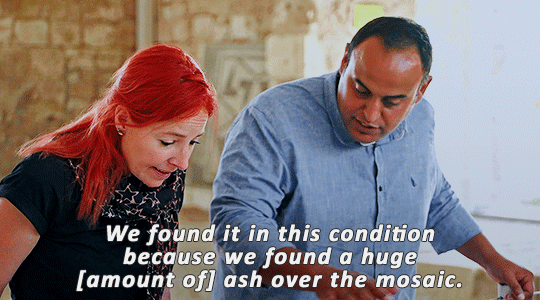
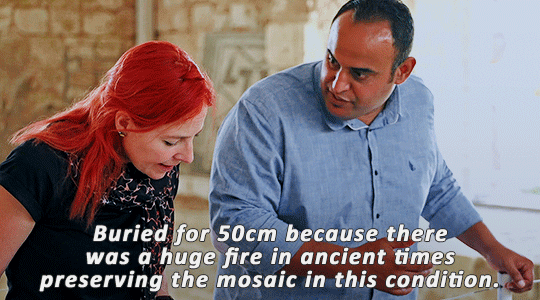
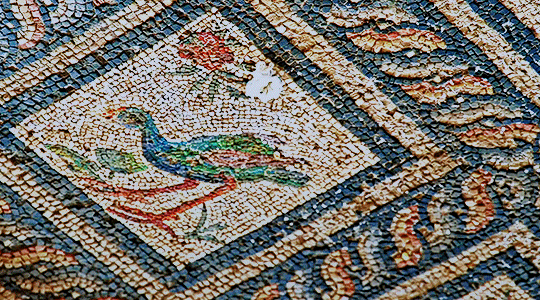
ANCIENT EGYPT BY TRAIN (2023) — 1.01 Alexandria
Site Director Mahmoud Abd El Rahman explains the preservation of the mosaics in the Villa of the Birds, Kom El Deka, Alexandria.
#egypt#ancient egypt#egyptology#archaeology#historyedit#documentary#gifsbyancientegyptdaily#doc: ancient egypt by train#alice roberts#roman egypt#mahmoud abd el rahman#2023
406 notes
·
View notes
Text

Isis-Aphrodite
* 2nd century BCE - 1st century CE
* terracotta
* Turin Egyptian museum
Turin, June 2023
#Isis-Aphrodite#goddess#Ptolemaic Egypt#Roman Egypt#ancient#terracotta#statue#ancient colours#art#Isis#Aphrodite#Turin Egyptian Museum#my photo
483 notes
·
View notes
Text
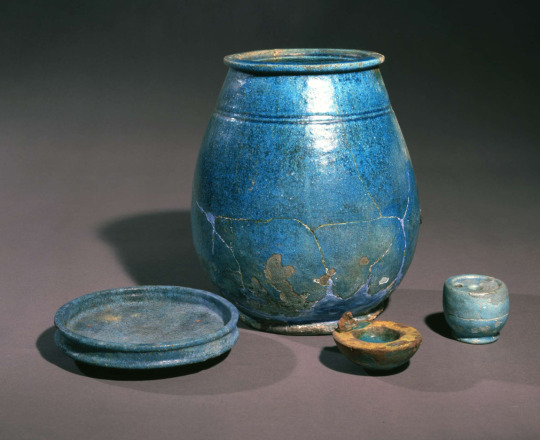
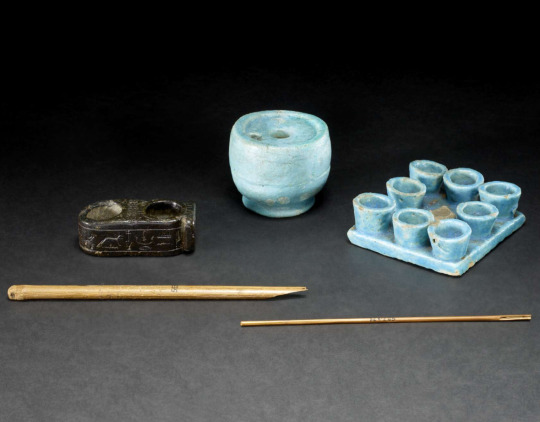
Blue glazed jar, bowl, pigment container and composition ink-well
Roman Egypt, 1st-2nd Century A.D.
British Museum. EA22015
201 notes
·
View notes
Text
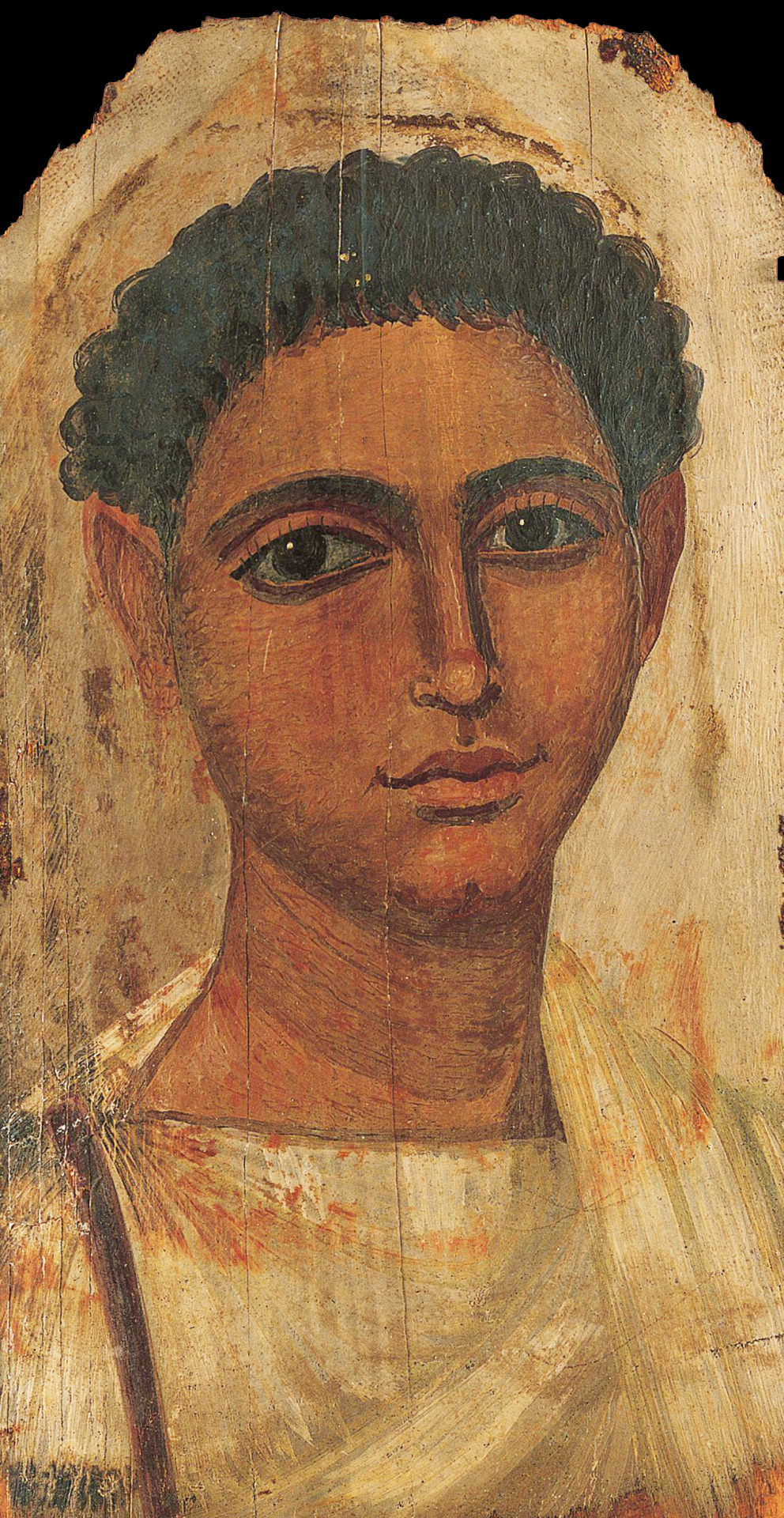
Faiyum Portrait of a Roman Citizen, 2nd century A.D, Roman Egypt
Norton Simon Museum
#Faiyum portrait#faiyum#brunet#art#fine art#roman empire#roman egypt#egypt#mediterranean#classical art#fine arts#roman#egyptian#ancient#ancient history#ancient rome#ancient egypt#ancient world
301 notes
·
View notes
Text
https://english.ahram.org.eg/News/515253.aspx

Incredible find. I love those sunken (or perhaps just buried?) sarcophagi.
63 notes
·
View notes
Text


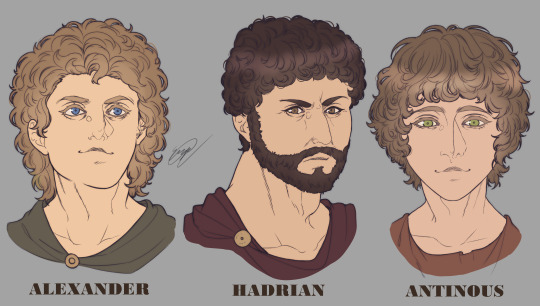
(Full view plz)
Some historical characters that will be making an appearance in the webcomic I'm developing!
#webcomic#ancient history#ramesses ii#hatshepsut#amasis#mark antony#cleopatra vii#octavian#augustus#alexander the great#hadrian#antinous#ancient egypt#ancient rome#ancient greece#roman egypt#hellenistic egypt#imperial rome#hellenistic period#republican rome#ptolemaic egypt#shmswart#thefollowersart
84 notes
·
View notes
Text
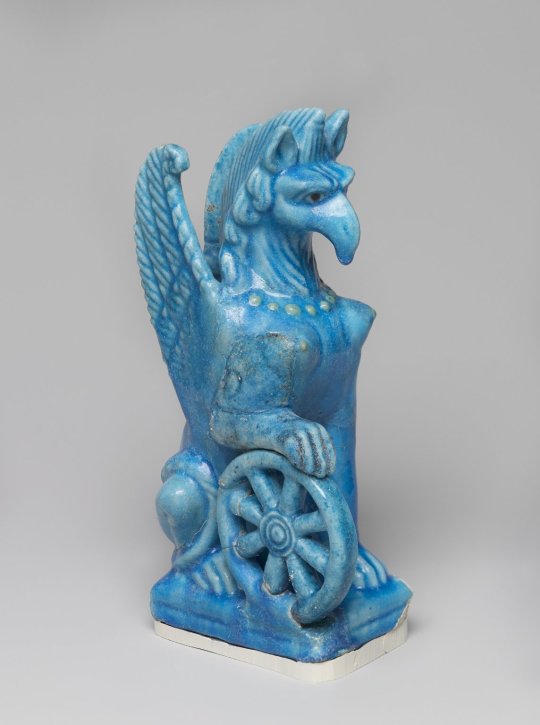
statuette of Nemesis in the form of a female griffin with wings, Roman Egypt (2nd century CE), earthenware and blue faience with yellow faience necklace and black and white glazed eyes
currently in the collection of the Brooklyn Museum (accession no. 53.173)
#isaac.txt#archaeology#egyptology#egypt#egyptian archaeology#roman egypt#roman#art#nemesis#earthenware#faience#brooklyn museum
393 notes
·
View notes
Text

A 1,900-year-old statue of the Buddha — discovered at the ancient Egyptian port city of Berenike, on the coast of the Red Sea — likely belonged to a transplant from South Asia, according to archaeologists.
149 notes
·
View notes
Text

The Egyptian deity Horus as a Roman emperor. The figure bears the falcon-head of Horus, topped by the characteristic double crown (pschent) of Egyptian pharaohs, but also wears Roman armor (specifically lorica squamata, consisting of metal scales sewn to a fabric backing) with a small gorgoneion. Artist unknown; 2nd cent. CE. Now in the Louvre. Photo credit: © Marie-Lan Nguyen / Wikimedia Commons /
CC-BY 4.0
#classics#tagamemnon#Ancient Rome#Roman Empire#Egypt#Ancient Egypt#art#art history#ancient art#Egyptian art#Ancient Egyptian art#Roman art#Ancient Roman art#Roman Imperial art#Roman Egypt#Romano-Egyptian art#Horus#Egyptian religion#Ancient Egyptian religion#kemetic#syncretism#sculpture#statuette#figurine#metalwork#bronze#bronzework#Louvre#Louvre Museum#Musee du Louvre
1K notes
·
View notes
Text
Beautiful shot of the mummy mask of an unnamed lady. Colourful gods parade across the yellow mask, bringing offerings: on this, the left side, we have Seshat, Hathor (wearing an elaborate headdress with a vulture wearing the red crown), Tefnut, and Anubis wearing the double crown.
(This is the same as this.)
When: Roman Egypt
Where: Metropolitan Museum of Art, New York
#Ancient Egypt#mummy mask#Seshat#Hathor#Tefnut#Anubis#Roman Egypt#Metropolitan Museum of Art New York
49 notes
·
View notes
Text
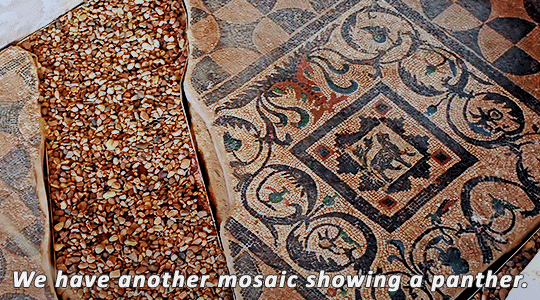

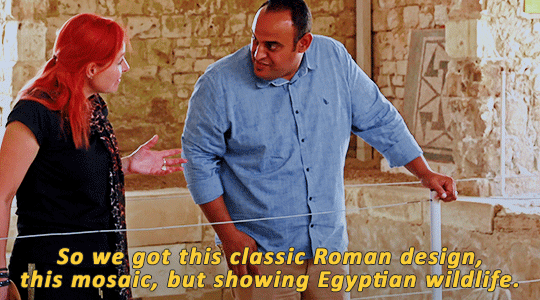
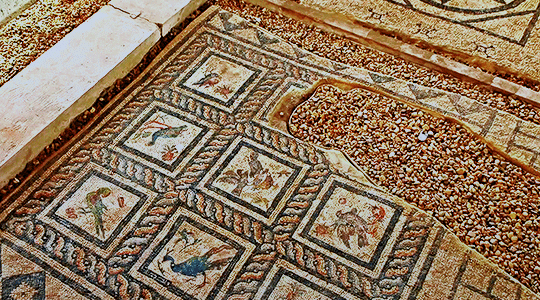
ANCIENT EGYPT BY TRAIN (2023) — 1.01 Alexandria
#egypt#ancient egypt#egyptology#archaeology#historyedit#documentary#gifsbyancientegyptdaily#doc: ancient egypt by train#alice roberts#roman egypt#alexandria#mahmoud abd el rahman
248 notes
·
View notes
Text
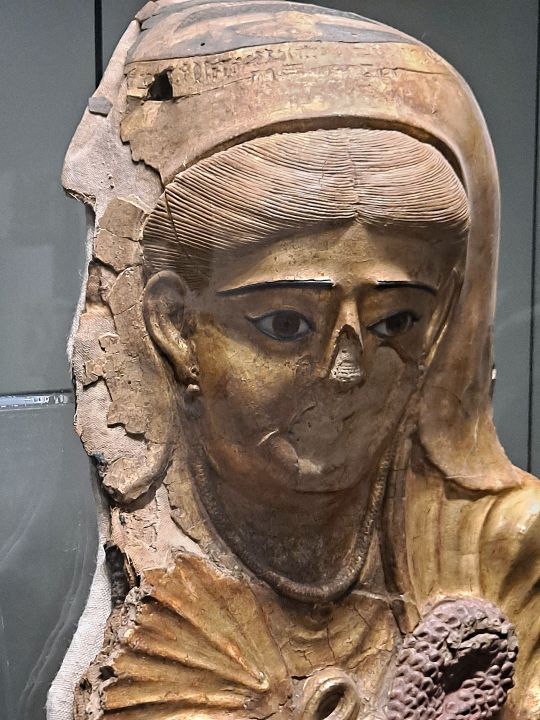
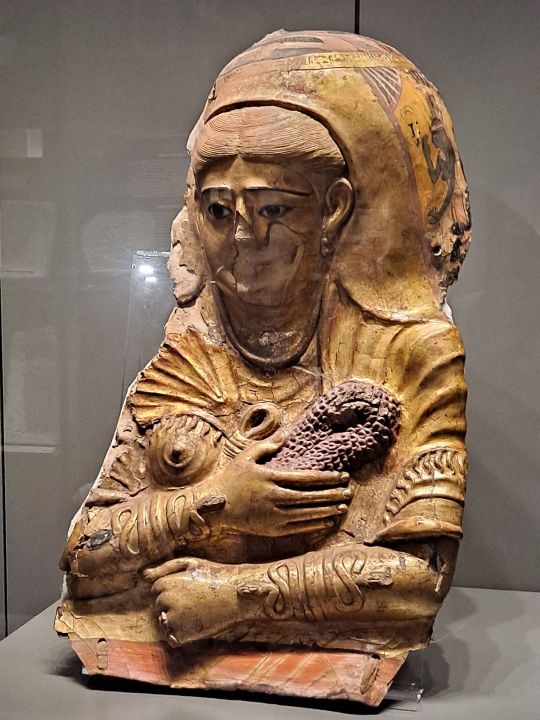
Mask of a female mummy
Fayum
2nd century CE
Egyptian Museum, Turin
Turin, June 2023
#Roman Egypt#2nd century CE#eye#mummy mask#ancient#art#Roman#Turin Egyptian museum#my photo#hairstyle
484 notes
·
View notes
Text
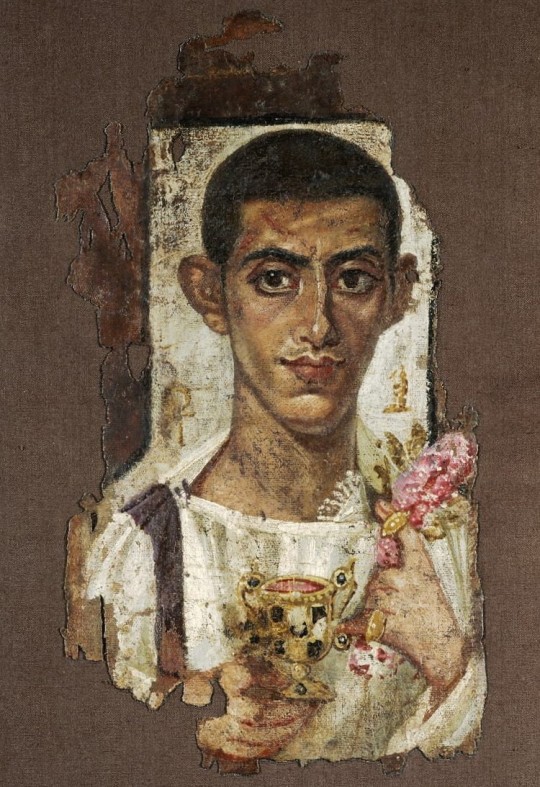
Mummy shroud from Antinoöpolis, Egypt
c. 225 - 250 A.D.
79 notes
·
View notes
